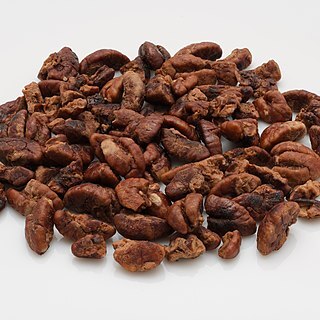A tree that loses its leaves. It grows 18 m high and spreads 4 m wide. The leaves are compound. They have 5-7 leaflets with one at the end. Leaves are 20-30 cm long. The leaf stalk has orange round scales. Leaflets can be 6-12 cm long by 3-5 cm wide with larger leaflets near the end. The husks of the nuts are covered with orange scales. The nut are oval and 2-3 cm long by about 2 cm wide.

